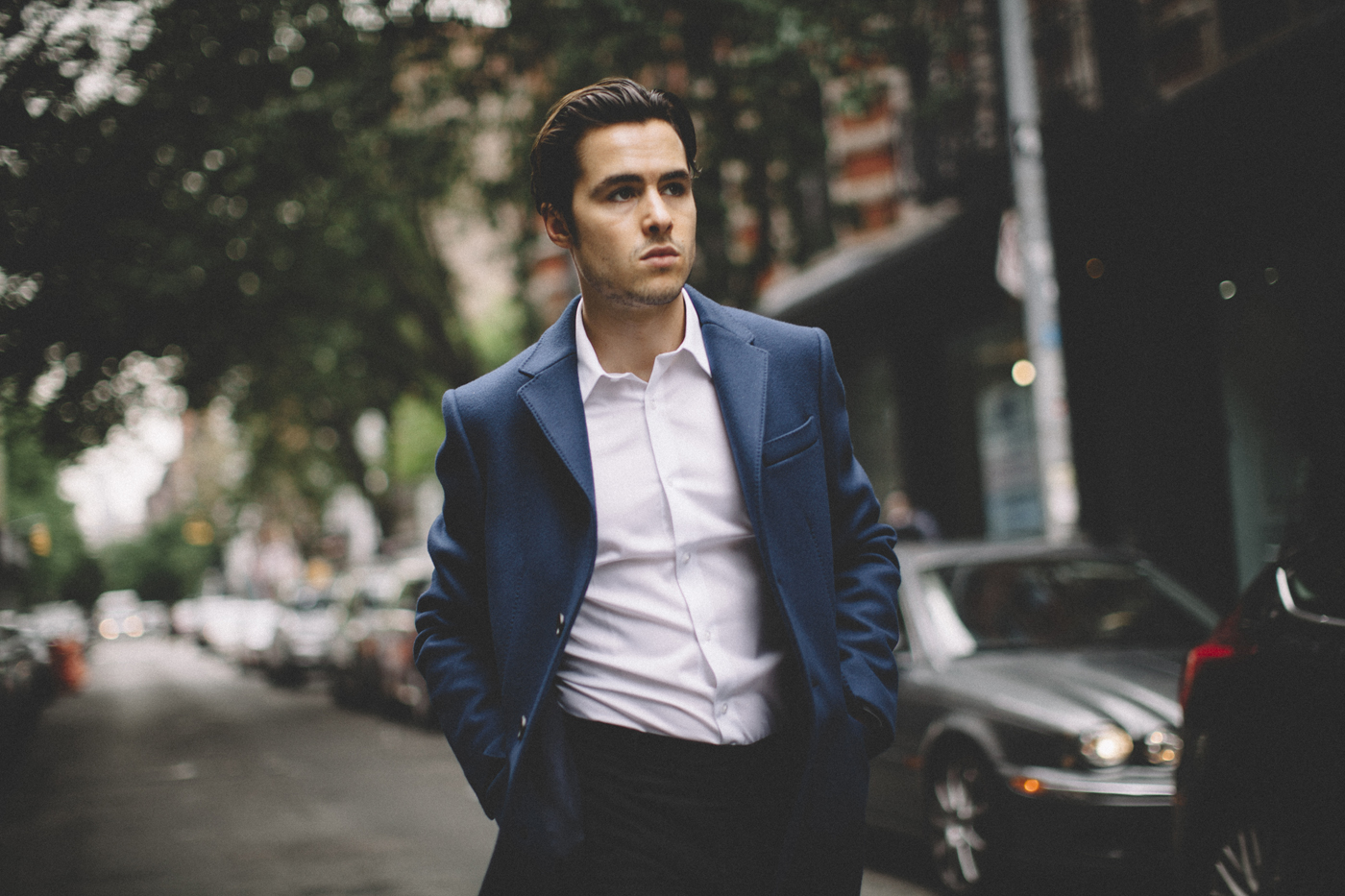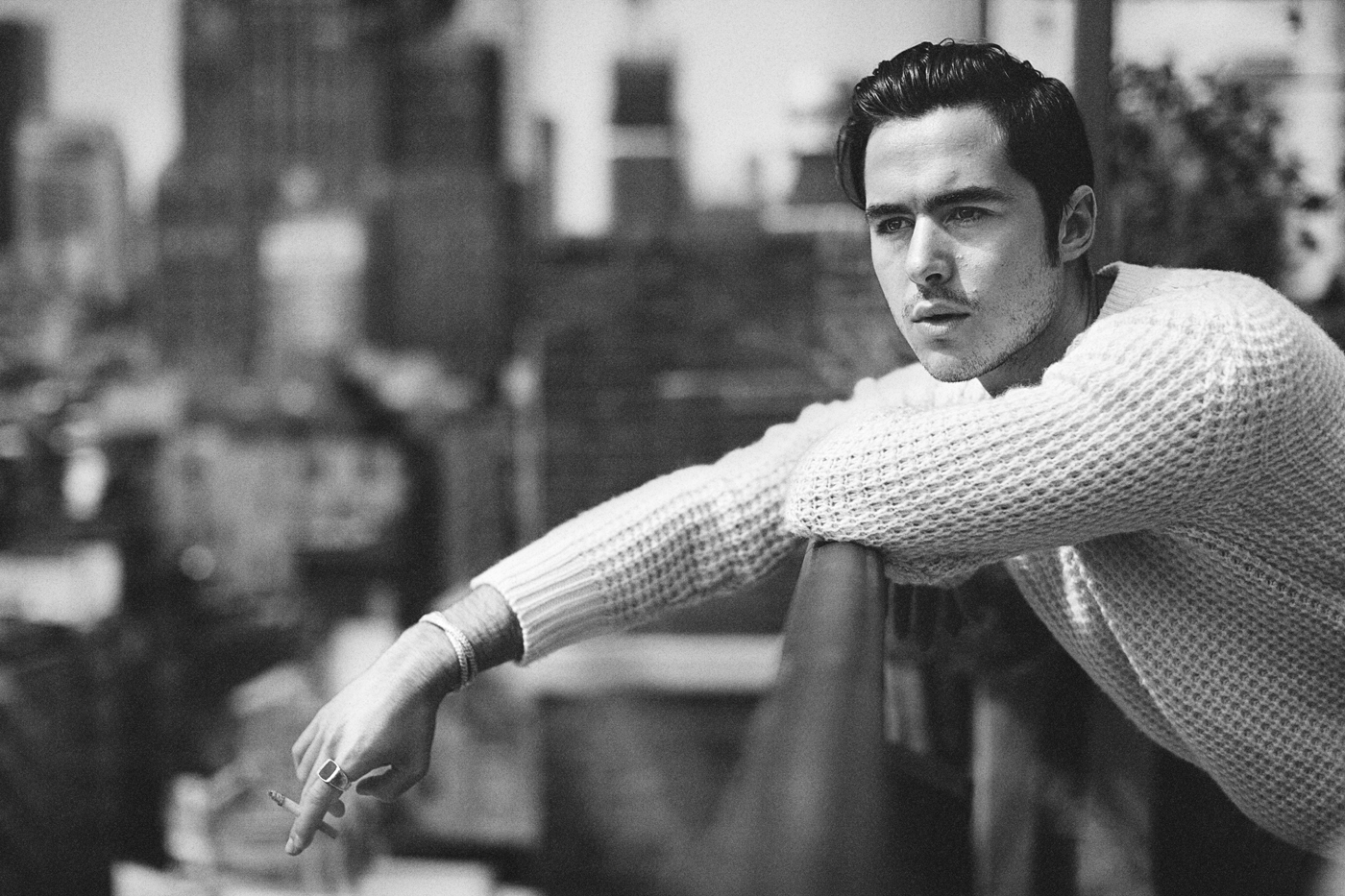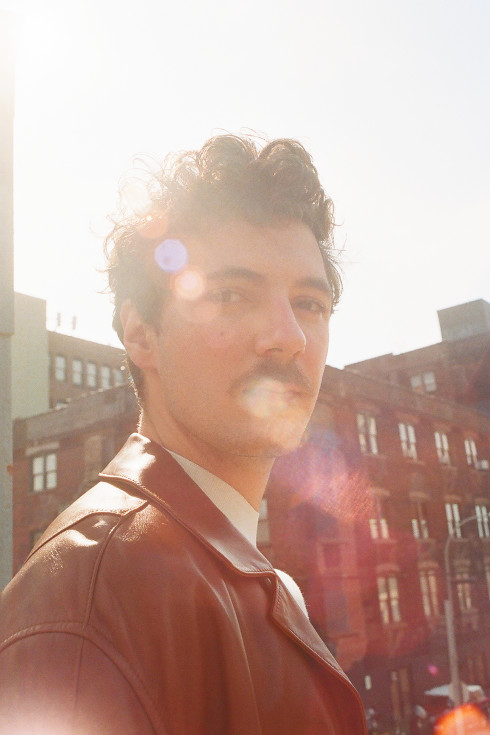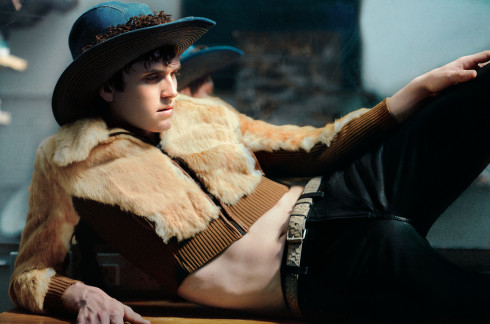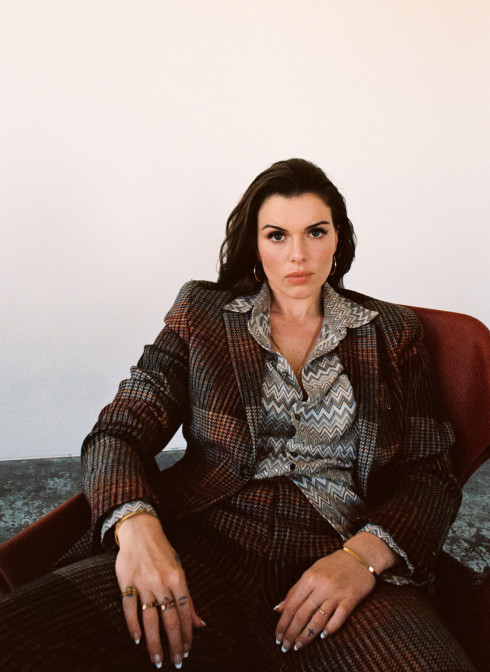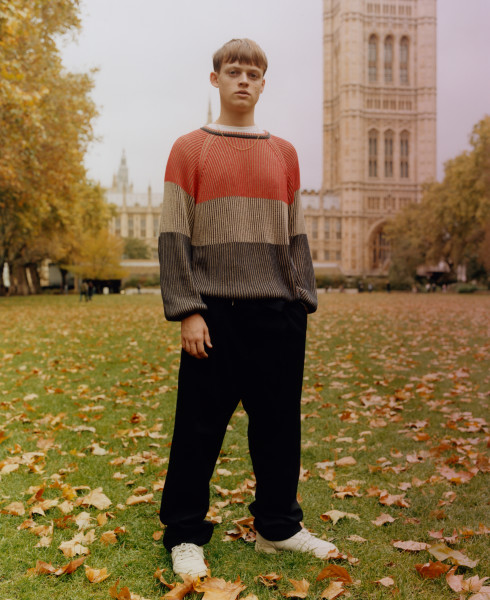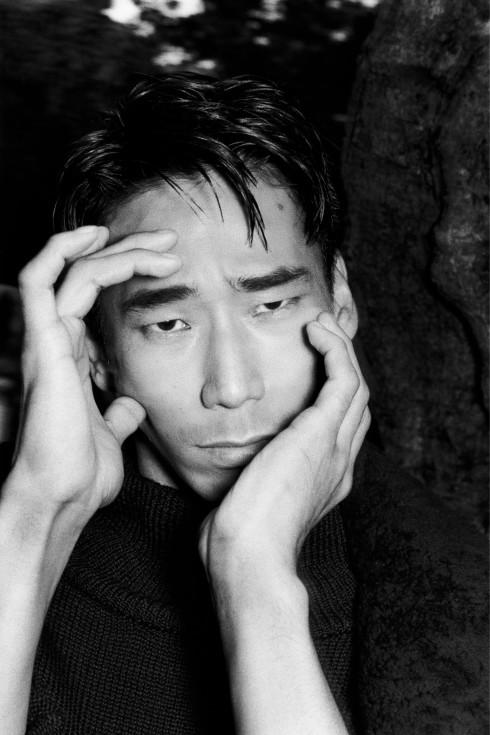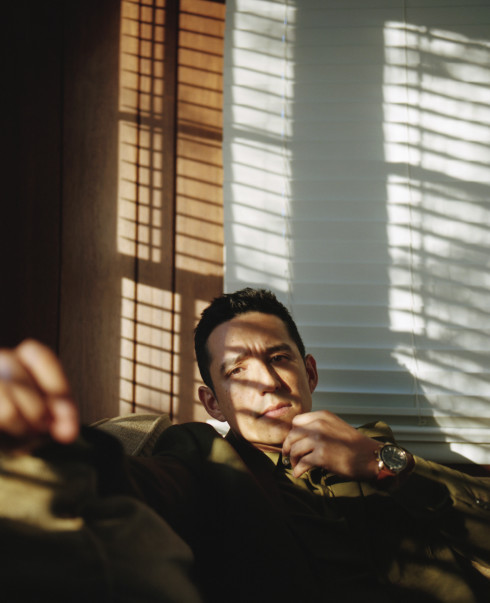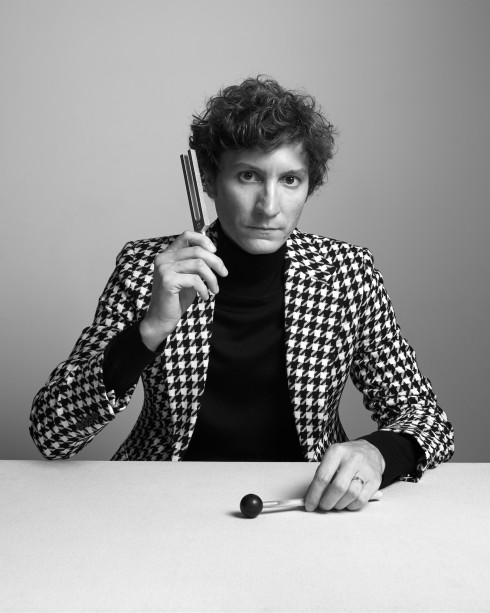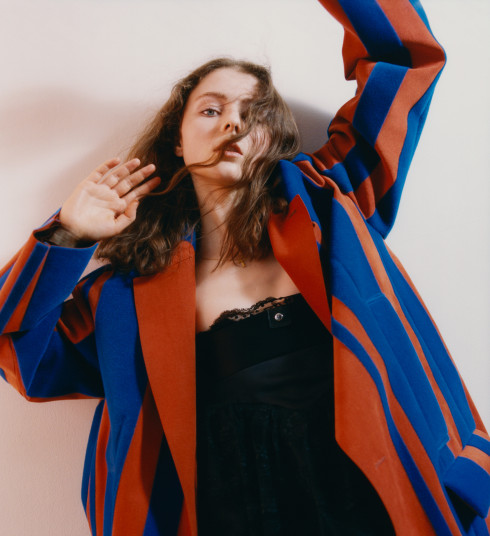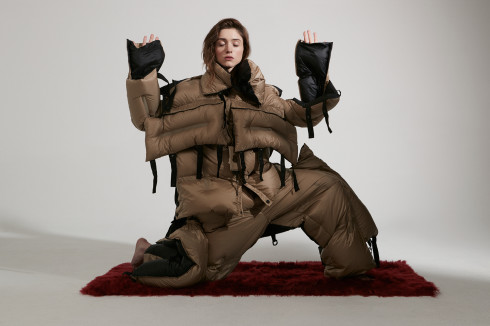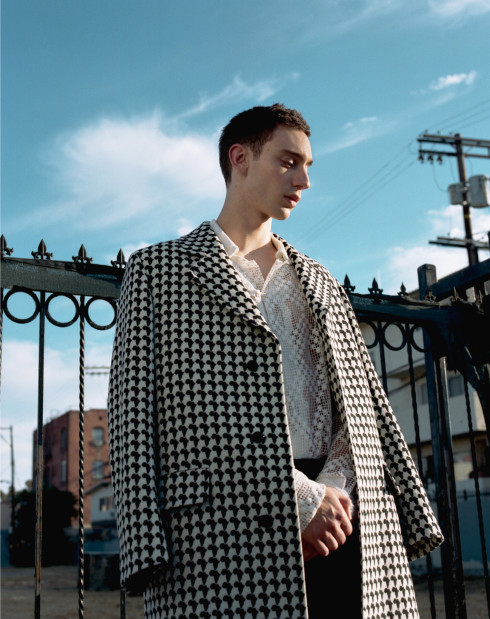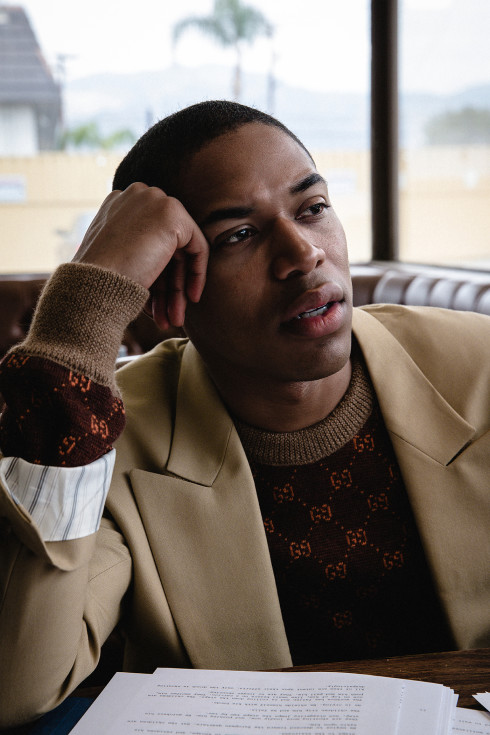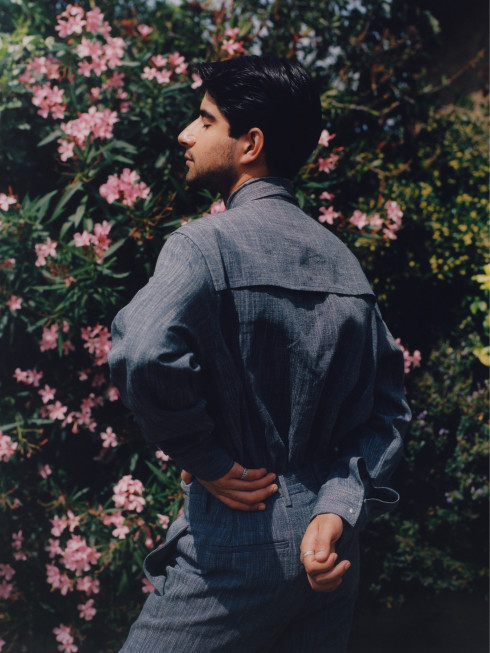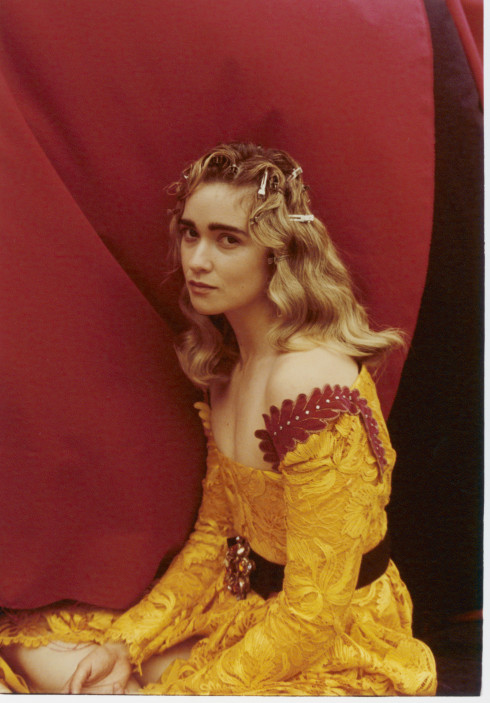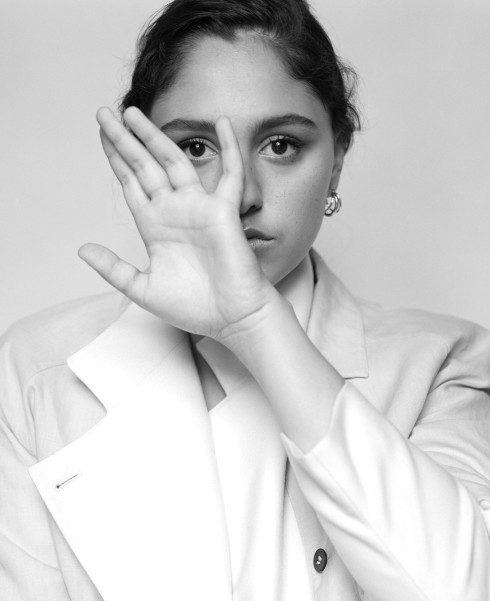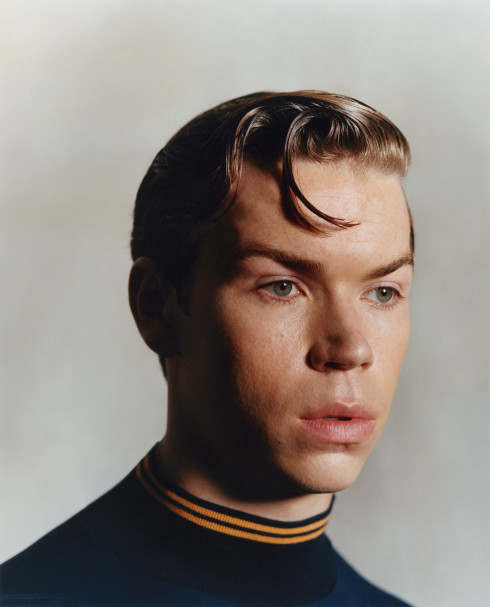- By
- Jonathan Shia
- Photography by
- Richard Gilligan
Styling by Javon Drake. Grooming by Amy Komorowski at Art Department. Photographer’s assistants: Richard Wade and Mateo Arciniegas. Digital technician: Kyle Tunney. Retouching by Jamie Saunders. Shot on location at The Gordon Bar at SIXTY SoHo, New York.
BEN SCHNETZER
This September, thanks to the vagaries of release scheduling, the young American actor Ben Schnetzer will hit movie screens in two very different projects in the span of one week. On the sixteenth, he’ll appear in Snowden, Oliver Stone’s dramatization of the Edward Snowden saga, as a fellow NSA analyst who befriends Joseph Gordon-Levitt’s eponymous revolutionary in a film that, given Stone’s powerful political opinions, promises to stoke intellectual debate. The twenty-third will see the release of Goat, a particularly visceral and powerful movie about a brutal fraternity hazing, as a freshman undergoing the traumatizing rite of passage under the watch of his older brother, played by Nick Jonas. A rushing undergrad and a computer expert might seem worlds apart, but that range is all in keeping with an actor who has, in just three years, proved his malleability and wide-ranging curiosity in a budding career that is seemingly without pause.
The son of Stephen Schnetzer, a longtime regular of soap operas, and Nancy Snyder, an award-winning theater actress, the 26-year-old Schnetzer began performing in school plays as a child, calling it his “recreation of choice.” A video store across the street from his family home on Manhattan’s Upper West Side helped fuel an eclectic love of movies, and he grew up on a diet of Sidney Lumet, Gus Van Sant, and, somewhat surprisingly, Gene Kelly. “I fucking love musicals, I don’t know how you could not,” he laughs. “Movement and dance are such unadulterated forms of expression. There’s no baggage with it. If I could go back in time, I would’ve started dancing when I was a kid.” A high school play led to an audition with a casting director, which led to an agent, all before he even graduated. Schnetzer had hoped to take a gap year to travel, but he ended up working at Magnolia Bakery to earn some cash and decided to spend his free time focusing on auditions. “I was like, ‘If I’m in the city, let me really try and make auditioning a top priority,’” he recalls. “I saved up my money, went to South America for a few months, came home, was ready to go to college, and that’s when I got my first acting job. It was validating and it was like, ‘Oh, this is real,’ so that’s when the focus shifted.”
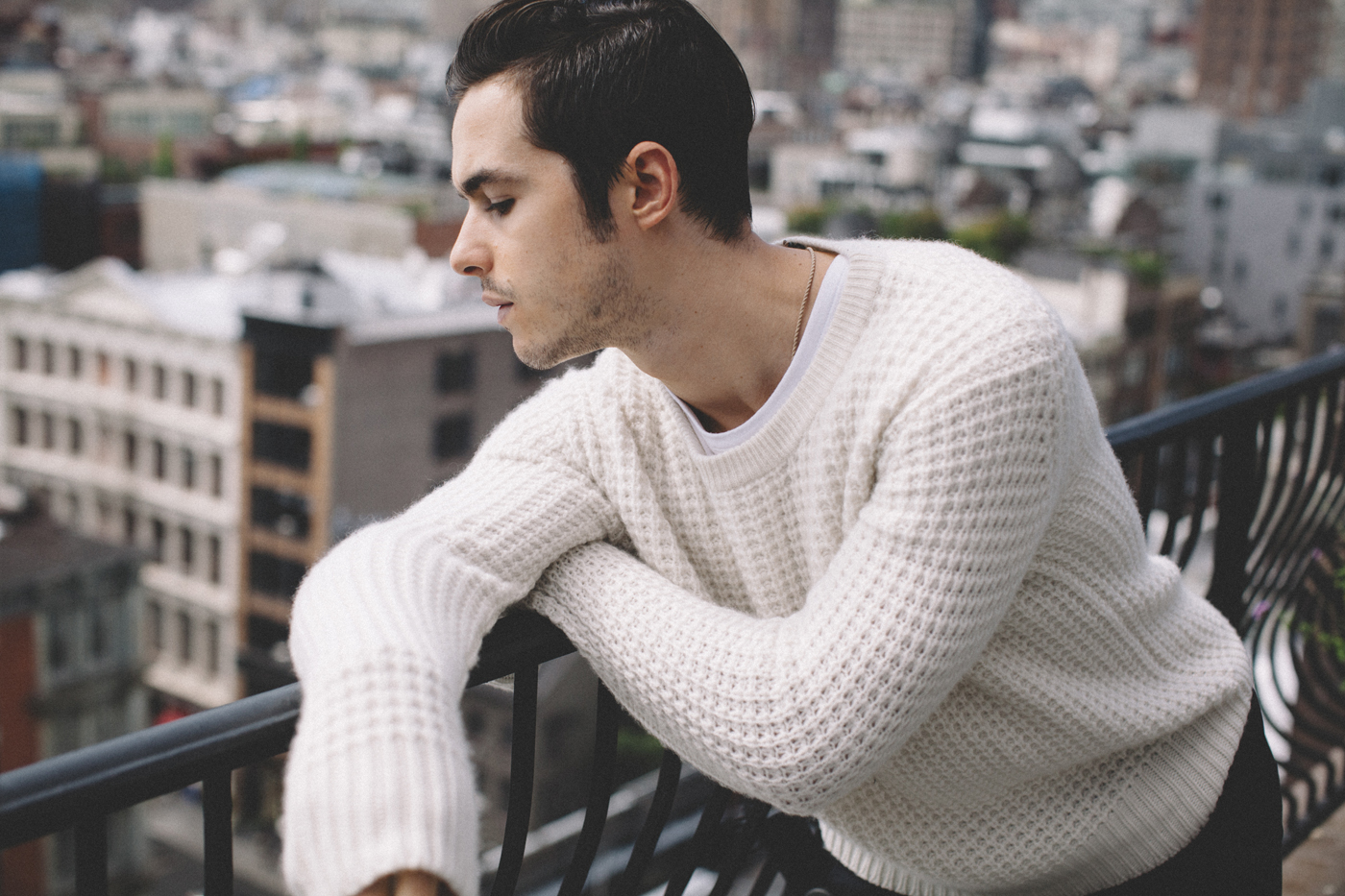
Initially intending to study foreign languages or sociology, Schnetzer says he quickly decided to apply to drama school instead, ending up at London’s Guildhall School of Music and Drama thanks to a passel of factors, including, he jokes, the prospect of graduating in three years instead of four. “There are a lot of American actors that I admire, but all these guys whose work I was really attracted to were classically trained in England,” he says, naming Michael Fassbender, Ben Whishaw, Benedict Cumberbatch, and Tom Hardy.
Schnetzer left school after two years to film The Book Thief, but he credits his time there for instilling a strong foundation in him and for showing him, as his parents always said, that acting is both a craft and vocation. “When you’re in a really good mood or you feel open and emotionally available and present, acting is great and it’s the most exhilarating and freeing experience you can have,” he explains. “But when your girlfriend broke up with you and you didn’t get that paycheck from that last job yet and you’re stressed out and didn’t sleep well, that’s when it becomes a profession and that’s when training comes into play.”
Joining The Book Thief, a major studio adaptation of a bestselling novel about a young girl living through World War II in Germany, while still in school was “intense.” Schnetzer recalls making clandestine audition tapes between classes and waking up at five one morning to meet the film’s director across London before rehearsal at school. But the efforts paid off when he was cast in the key role of Max Vandenburg, a young Jew taken into hiding by the family at the film’s center, opposite Geoffrey Rush and Emily Watson. The role earned him positive attention and proved to be an invaluable introduction to the movie business. “As a first film, I think I really wanted to leave it all out on the court and really go for it,” he says. “There’s a number of different things that factor into making a film, and you on set between Action and Cut is like 0.2% of what goes into it. You learn a lot about that idea of being a construct in someone else’s story and letting yourself go. It was an interesting way to cut your teeth.”
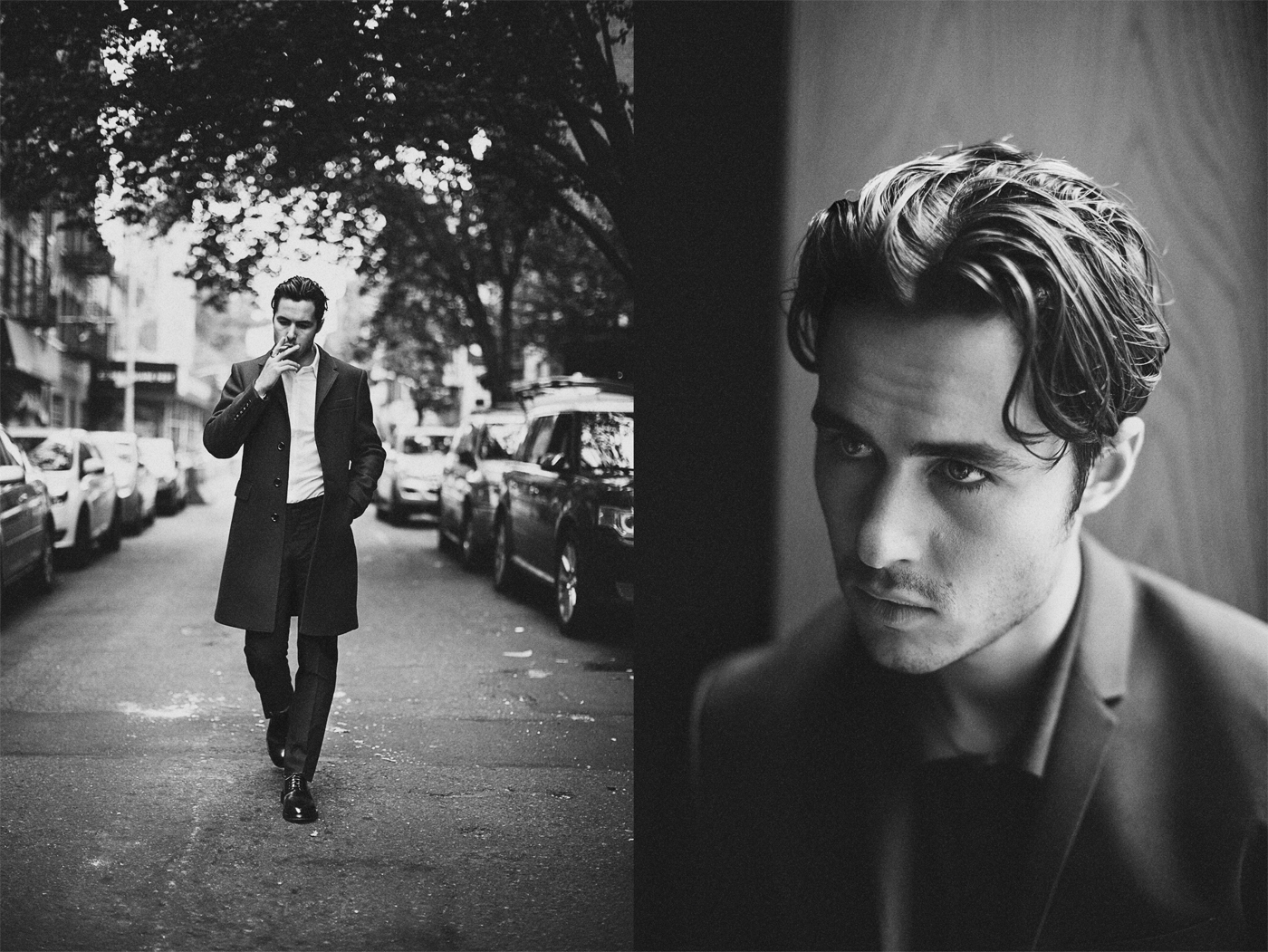
Just ten days after returning home from wrapping The Book Thief in Germany, Schnetzer was on his way back to England for The Riot Club, Lone Scherfig’s adaptation of the play Posh, which also starred Max Irons, Sam Claflin, Matthew Beard, and a pack of other young British actors as wealthy scions who are members of an exclusive club devoted to debauchery and a heedless disinterest in the less privileged. The film offers a scathing look into the class divide, focusing on one especially drunken celebration that ends in violence and destruction. “You always have to defend your character, you always have to find a justification and righteousness in your character, but these guys, objectively, are deplorable,” Schnetzer says. “It was interesting and it was a difficult leap at times, really finding love for the character and really finding the righteousness in it.”
Schnetzer’s next role, in the Golden Globe-nominated Pride, found him back in England again, this time playing Mark Ashton, the founder of Lesbians and Gays Support the Miners, a group that offered backing for the miners’s strike during the Thatcher years. “Talk about a character and a story that you read and it’s very easy to fall in love and very easy to want to fight for,” he says. “It’s really nice when you sign onto something and it comes out as the best version of what you hoped it would be. It’s very important to let go of the finished product because I think, as actors, our job has nothing to do with the finished product. It’s process-oriented art. The day I start caring more about the finished product is the day that I’ll become a producer or an editor or a director.”
It was a play that finally brought Schnetzer home, when he performed in a revival of David Rabe’s Sticks and Bones in the fall of 2014 opposite Holly Hunter and Bill Pullman as his parents trying to navigate the terrifying aftereffects of his experience fighting in Vietnam. Both the work and the role are fascinatingly difficult and dark, and Schnetzer says that, beyond the work of embodying the embittered and blinded veteran David, he was struck by the sheer physical effort of the part. “Just imagine doing a show eight times a week for two, three months,” he explains. “It’s real, there’s no short cut. But I really enjoyed it. I enjoyed that sense of ownership and control you have on stage and taking the whole journey every night.”
Earlier this year, Schnetzer appeared in the blockbuster Warcraft film, based on the popular computer game, as the mage Khadgar. The fantasy movie, with its tale of warring kingdoms and its orcs and dwarves, may seem to be a departure from his previous work, but he insists that shooting it was, in the end, not that far off from any other film, or even, in some ways, Chekhov. “The work itself is the same. If it’s a fantasy film, you still have to find the truth and you still have to find the reality in it,” he explains. “You have to make a leap of faith to successfully work with a VFX team because you need to trust them. If they’re telling you, ‘I know it looks like it’s just a green wall with a pink X on it, but once we cut it all together it’s going to be a huge explosion,’ you just have to say, ‘OK, cool, sweet,’ and you have to react. It feels stupid when you first do it, but it actually reminded me a lot of theater, because you have this fourth wall, so if you’re doing The Cherry Orchard and you’re looking out at the cherry orchard, it’s not actually there. It’s the same thing with CGI, you use your imagination.”
Even with all these films on his CV, this month’s double feature promises to bring Schnetzer to still wider attention. Snowden, about one of the most debated figures of the past few years, has been the subject of intense discussion for months. The cast and crew, including Gordon-Levitt and Shailene Woodley, have been understandably cagey about the plot, with Schnetzer revealing only that “hijinks ensue.” But he spoke openly about his admiration for Stone, who he says invests his actors with a power over their performances that can be rare, especially for a director of his stature. “I really enjoyed working with him because he really bestows a sense of ownership over a role,” he says. “Whether it’s a costume fitting or whatever, it’s ‘What do you think? Do you think it’s good? Tell me, how does it feel?’ He makes you feel like as soon as you get cast, you are now the authority on this character, and that feels really good.”
In Goat, Schnetzer says he found similarities to The Riot Club, especially in their portrayals of “pack mentality and masculinity in the twenty-first century” and their “examination of rites of passage and indifference in the face of something unjust.” Since its première at Sundance earlier this year, many viewers have found the film uncomfortably upfront about the brutality experienced by the fraternity hopefuls, but Schnetzer says that while filming, the actors doing the hazing seemed more troubled than those who were undergoing it. “By the time we shot that stuff, we were in the trenches for a few weeks and we were all super close friends, so I think they were very nervous about making sure we were comfortable,” he explains. “You could tell after certain takes, the guys just felt guilty, and you don’t want them to feel guilty. You’re like, ‘Just go for it, we’re good.’ We had a safe word.”
Having just finished shooting The Grizzlies, about a lacrosse league in the Arctic town of Iqaluit, Canada, earlier this summer, Schnetzer jokes that he is now “beating the bricks, staying positive, hopefully going to get another job.” After years abroad, he still lives in his hometown when he can. “I like New York, New York is home,” he says. “I feel comfortable here and I feel inspired here.”
Even after an exhausting run of project after project after project, Schnetzer seems eternally eager for the next one, never satisfied to remain at rest for too long. “I think the more shit you have to get done, the more shit you get done,” he says. “The busier you are, the more productive you are, so it’s nice having a lot of plates spinning in the air.”
Snowden is out today. Goat is out September 23.
- By
- Jonathan Shia
- Photography by
- Richard Gilligan
Styling by Javon Drake. Grooming by Amy Komorowski at Art Department. Photographer’s assistants: Richard Wade and Mateo Arciniegas. Digital technician: Kyle Tunney. Retouching by Jamie Saunders. Shot on location at The Gordon Bar at SIXTY SoHo, New York.

